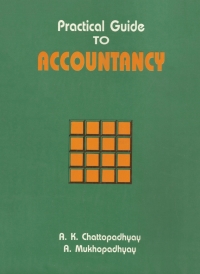Waverley Welding Company provides welding services for a variety of industrial customers in the manufacturing, aerospace, and electronics industries. The number of jobs completed from one month to the next varies considerably, and jobs differ in terms of the complexity of the welding requirements. More complex jobs can take significantly longer to complete. Management knows that overhead costs have a fixed and a variable component but, until now, has not attempted to determine which measure of activity should be used for planning and forecasting The table below shows data for the most recent fiscal year. Management believes that either the number of jobs completed each month or the number of direct labour-hours incurred each month could be used as the activity base. However, they are not sure which is more appropriate. Overhead includes costs such as the maintenance supervisor's salary, depreciation on the welding equipment, and indirect materials used on each job. Electricity costs are also included in overhead and are significant since welding equipment consumes a relatively high amount of energy. Waverley Welding also employs a mix of experienced and inexperienced welders. Experienced welders are paid a higher hourly wage but are more efficient and tend to incur less wastage of indirect materials. Inexperienced welders are of course paid less on a per hour basis but work more slowly and use more indirect materials Month January February March April May Direct Labour Hours 4.933 3,548 3,990 5.466 1,914 3,157 3,000 6,114 5.108 3,624 3.900 5.700 Jobs 500 350 400 550 200 250 500 600 500 350 400 $10 D June 1 July 2 August 3 September 1 October 5 November 6 December Overhead Cost S 75,197 $ 69.491 $ 71.993 S 81.217 S 60,162 s 68,364 S 78,351 $ 81.582 $ $ 68,355 S 69.886 S 83434 77,691 D G H Required a Use Linear Regression to determine the cost formula for overhead cost assuming jobs produced is the activity base. Calculate the R.squared (Goodness of fit). overhead cost + R? per job (b) Use Linear Regression to determine the cost formula for overhead cost assuming direct labour hours is the activity base. Calculate the R-squared (Goodness of fit) overhead cost + per Direct Labour hour R? (c) Based on your answers in parts (a) and (b), which is the most appropriate cost driver for overhead costs? Briefly explain why








